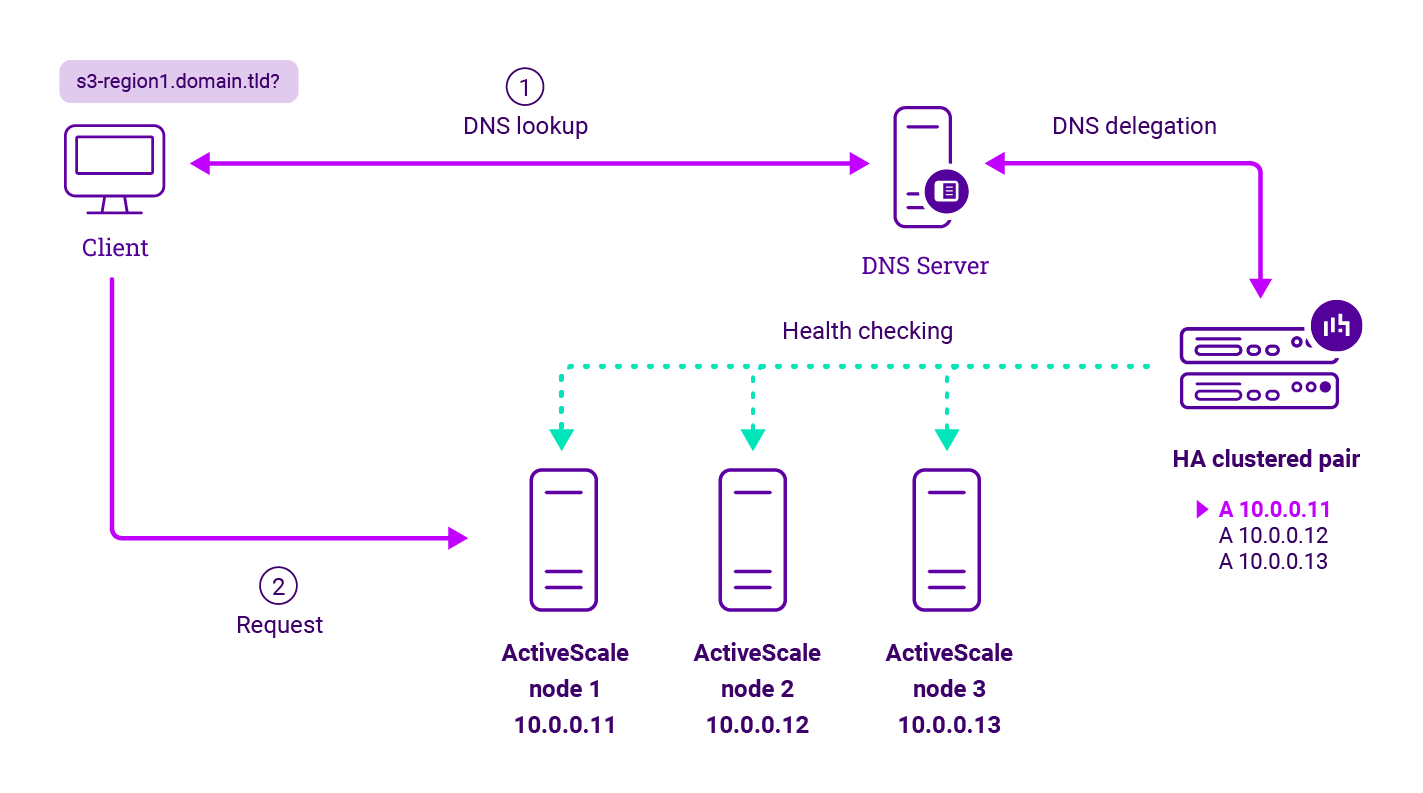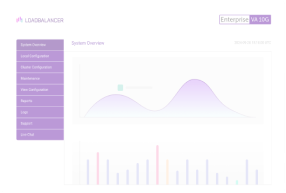Load balancing Quantum ActiveScale Object Storage
Benefits of load balancing Quantum ActiveScale Object Storage
Load balancing Quantum ActiveScale Object Storage with GSLB direct-to-node offers the following benefits:
- High throughput and unrestricted bandwidth: The fundamental advantage of the direct-to-node approach is that it removes the load balancer from the data path. In a standard setup, all client traffic must pass through the load balancer, which can become a bandwidth bottleneck. With GSLB direct-to-node, the load balancer’s primary role is to resolve the initial DNS request to the best available node and perform health checks. Once the client receives the IP address of the node, client traffic flows directly to the ActiveScale node and back. This deployment method is ideal for object storage environments like ActiveScale, where high, consistent throughput for large data transfers (like backups, archives, and media files) is paramount. The throughput is limited only by the cluster’s collective network capacity, not the load balancer’s capacity.
- Enhanced operational resilience and High Availability (HA): GSLB direct-to-node significantly improves system reliability and fault tolerance. Unlike simple DNS round-robin, GSLB actively performs health checks on each ActiveScale storage node. If a node fails to respond correctly, the GSLB system automatically removes that node’s IP address from the pool of available nodes it provides to clients. This ensures that new client requests are only directed to healthy, operational nodes, providing uninterrupted service and transparent fault tolerance to end-users.
- Preventing ‘hot nodes’ for better utilization: The combination of ActiveScale’s internal data distribution and GSLB’s connection management helps maintain cluster health. By intelligently distributing new client connections across the available nodes, GSLB direct-to-node helps smooth out node utilization across the ActiveScale cluster, especially beneficial for clusters with a high node count and consistent high-throughput workloads. This load balancing mechanism complements ActiveScale’s internal Dynamic Data Placement (DDP) feature, which ensures that object data and parity are evenly distributed across all available storage resources, further preventing the creation of performance-degrading “hot nodes” (nodes that are significantly more utilized than others).
About Quantum ActiveScale Object Storage
Quantum ActiveScale is an object storage solution which provides a new and innovative approach to creating a simple, ‘always-on’ data repository that scales when needed. This is done with the extreme data durability, accessibility, and security required of petabyte-scale growth.
As part of this solution, ActiveScale Cold Storage reduces the cost of storing cold data sets by up to 80%.
Why Loadbalancer.org for Quantum ActiveScale Object Storage?
Loadbalancer’s intuitive Enterprise Application Delivery Controller (ADC) is designed to save time and money with a clever, not complex, WebUI.
Easily configure, deploy, manage, and maintain our Enterprise load balancer, reducing complexity and the risk of human error. For a difference you can see in just minutes.
And with WAF and GSLB included straight out-of-the-box, there’s no hidden costs, so the prices you see on our website are fully transparent.
More on what’s possible with Loadbalancer.org.
How to load balance Quantum ActiveScale
For Quantum ActiveScale, using the GSLB direct-to-node deployment method is recommended. This is used when network throughput is paramount while at the same time retaining active health checking of ActiveStore nodes.
GSLB direct-to-node load balancing
In this GSLB direct-to-node load balancing scenario, the function of the load balancer is to ensure that connections to a Quantum ActiveScale cluster are distributed across the ActiveScale nodes. This is done to provide a highly available and scalable service.
This is achieved by configuring the load balancers to actively health check the ActiveScale nodes and serve up the IP address of a healthy node in response to a (delegated) DNS request for the ActiveScale service’s domain.
Client traffic flows directly to the ActiveScale Nodes and directly back again – which means the load balancer is entirely removed from the path of ActiveStore traffic:



















